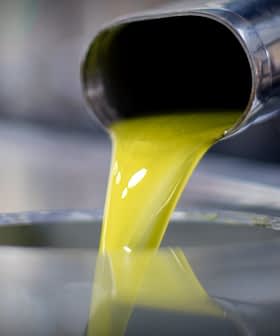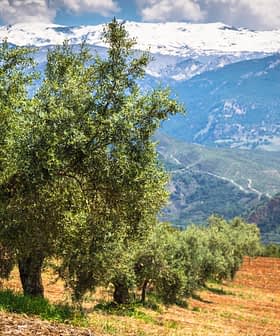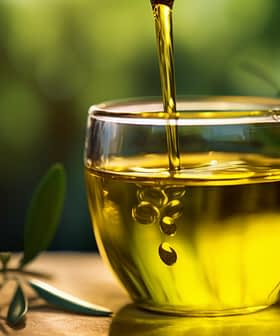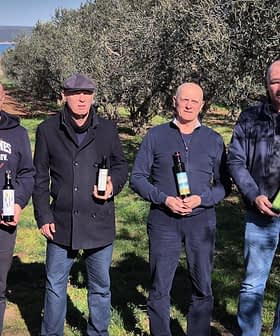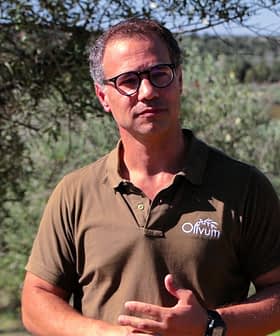 8.7K reads
8.7K readsProduction
Trás-os-Montes Producers Focus on Quality
The Trás-os-Montes e Alto Douro region in Portugal is known for producing high-quality olive oil, with several producers receiving international recognition. Despite this success, challenges such as lack of national promotion and confusion in the labeling of olive oil in Portugal persist, prompting efforts to improve quality and marketability in the region. Maria Andrade, a newcomer in the industry, has won awards for her exceptional olive oil and emphasizes the importance of maintaining quality to ensure the viability of the DOP.
In a corner of the corner of Western Europe lies a multi-prize winning pocket of olive oil country. As its Portuguese name suggests, Trás-os-Montes e Alto Douro lies beyond the mountains in a valley high up the Douro river in north-eastern Portugal.
The Trasmontanos are said to be daring and hardworking, traits supposedly the fruit of centuries struggling amidharsh soil and an inclement climate. Whether an accurate stereotype or not, something keeps propelling this region into the international spotlight for premium olive oil.
 The Trás-os-Montes e Alto Douro region covers more than 34,000 growers and 80 labels and supplied 30% of Portugal’s 2008-09 olive oil output of 50,000 tons. In recent months it has added to its prize-haul with success on three continents.
The Trás-os-Montes e Alto Douro region covers more than 34,000 growers and 80 labels and supplied 30% of Portugal’s 2008-09 olive oil output of 50,000 tons. In recent months it has added to its prize-haul with success on three continents.
Flos Olei, the Italian-produced guide to the best EVOOs, this year placed Trasmontano producer Maria Andrade in its world top 20. The guide gives olive oil producing farms a 0 – 100 ranking and Portugal’s highest-rated was also from the Azeite Trás-os-Montes DOP — Romeu da Sociedade Clemente Menéres, with 92 points. Of the 17 Portuguese producers included in the 2010 guide, nine were from this DOP. (DOP is equivalent to the EU classification PDO, or Protected Designation of Origin.)
With her João das Barbas EVOO, Maria Andrade also took second place in the PDO category at the first World Competition of EVOO, held in the Shanghai World Expo’s Italian pavilion.
And in the USA, the Porca de Murça olive oil was yet again distinguished as one of the best in the world. This Trás-os-Montes DOP product won silver in the Medium, Lote 50 category at the 2010 Los Angeles International Extra Virgin Olive Oil Competition. Magna Olea, from the same DOP, took bronze in the Medium, Cobrançosa category.
Challenges

- Branco

Despite all this success, António Branco, president of the Association of Olive Growers of Trás-os-Montes e Alto Douro (AOTAD), says the region has some major problems.
Among these are that Portugal has no national inter-professional body to promote and protect its olive oil industry. According to Branco, the government is more worried about reducing Portugal’s reliance on imported olive oil for domestic consumption than on increasing its quality exports. He’d like Portugal to do more to promote its oil overseas and to expedite the implementation of an EU regulation requiring the country of origin to appear on olive oil bottles.
Another problem is that in Portugal the commercial use of ‘azeite’ (Portuguese for olive oil) refers to a mixture of refined olive oil and extra virgin olive oil. “This is confusing for Portuguese consumers so AOTAD would like ‘azeite’ to be used only to refer toextra virgin olive oil and VOO,” Branco said.

- Alheira de Mirandela

The Transmontanos are famed for their plentiful tables, replete with local wine, olive oil and sausages, and it’s a concept Branco sees potential to exploit. His vision is for a regional brand to promote quality local produce including olive oil, wine, cheese, honey, bread and local meats and sausages such as the traditional Alheira de Mirandela.
AOTAD is also working for the adoption of a new DOP in the area, covering the Douro region, and on possible joint tourism and marketing with Spain’s neighboring Castilla y León region. It is also investing 1.3 million euros ($1.8m) in a social media network giving DOP members access to production and quality data, useful information such as threats to olive trees, and an on-line trading platform.
 With all this initiative it’s not surprising that AOTAD was last year’s winner of the Flos Olei “Cristina Tiliacos” prize, which recognizes excellence in the promotion
With all this initiative it’s not surprising that AOTAD was last year’s winner of the Flos Olei “Cristina Tiliacos” prize, which recognizes excellence in the promotion
and diffusion of olive cultivation.
Segmentation
 Olive oil production has been important in this region since at least the 16th century but the Azeite de Trás-os-Montes DOP did not come into existence until 1994. It is now one of six DOPs in Portugal and the country’s second largest area of olive oil production.
Olive oil production has been important in this region since at least the 16th century but the Azeite de Trás-os-Montes DOP did not come into existence until 1994. It is now one of six DOPs in Portugal and the country’s second largest area of olive oil production.
The guide says the main olive varieties in the Azeite de Trás-os-Montes PDO —Cobrançosa (30%), Verdeal Transmontana (25%), Madural (20%), Cordovil (10%) — produce “very refined and complex oils with a scent of spices, almond and other dried fruit”.
The DOP spans 3100 km², nearly 6000 DOP farms and 47,000ha of DOP olive groves. Olive and olive oil production boost the regional economy by more than 30 million euros ($41m) a year. But none of the growers makes a living from olives alone — they also farm animals and grow other products. They all sell their olives to one of the region’s 17 cooperatives or to one of the 100 local mills.
In a 2004 discussion paper, University of Minho researchers J. Cadima Ribeiro and J. Freitas Santos reported that designation of origin, a producer’s brand and olive oil characteristics (organic, mixed with garlic or herbs, etc.) all have a positive impact on prices for Portuguese olive oil. They said giving more visibility to the region of origin on labels and establishing brand names were appropriate moves, but should be accompanied by quality certification to stop “free-riders”.
visibility to the region of origin on labels and establishing brand names were appropriate moves, but should be accompanied by quality certification to stop “free-riders”.
The Agricultural Cooperative of Growers of Murça (CAOM) is an example of the widespread segmentation that has since occurred within the Trás-os-Montes DOP. CAOM has restructured to diversify its range, update its image, and adhere to extremely high-quality standards. It expects to increase its sales volume by 20% in two years, based on investment in external markets of high added value.
Branco says that across the DOP, cooperatives, mills and packers have upgraded their technology and adopted best practices in terms of factors such as harvest timing and temperature control. The training of olive oil tasters in the region was another key plank in the focus on premium oil.
An 81-year-old newcomer

- Andrade

The Flos Olei “Emerging Olive Oil Mill” prize won by Maria Andrade is intended to encourage “young” farms. Andrade’s family have for generations grown olives in the Mirandela area of the DOP but it wasn’t until 2008, at the age of 80, that she started producing her own olive oil.
Andrade’s 29ha grove is almost totally organically farmed and she harvests early, “to avoid the hard winters”. She says this costs her a little in terms of the yield, but pays off in “extraordinary quality”. Flos Olei says her João das Barbas oil is “excellent”, having “an intense limpid golden yellow color”, ample aroma, and a complex taste including hints of chicory, lettuce, mint and sage. A 250ml bottle retails in Portugal for 4 – 6 euros ($5.48-$8.21).
Having started on such a successful note, Maria Andrade says she now has a big responsibility: “because I can not let the quality drop.” The DOP can only stay viable, “if we invest in quality.” The problem is that many of the olive growers “harvest late because the yield and price are better, but you only get quality if you harvest before the arrival of frost, otherwise, the oil lacks aroma.” She says people need to be educated on how to take advantage of the DOP.
It’s a sentiment Branco shares and hopes the Portuguese government will also soon embrace.




